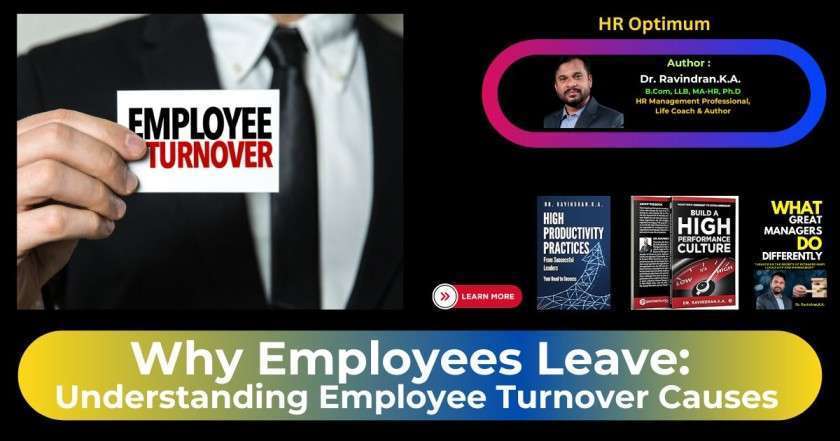How to Accurately Calculate Your Company’s Employee Turnover Rate
In today’s job market, knowing how to deal with employee turnover is key. Have you wondered how to figure out your turnover rate? This guide will help you. It shows you how to use this knowledge to better manage your talent. This can make your company more productive and profitable.
Thank you for reading this post, don't forget to subscribe!Key Takeaways
- Find out why calculating employee turnover rate is so important.
- Learn how to define and measure your company’s turnover rate step by step.
- Discover what affects employee retention and how to reduce turnover.
- Compare your turnover rates with industry standards and aim for better results.
- Adopt strategies to keep employees happy and engaged.
But do you really understand how big the impact of employee turnover can be? Let’s explore the effects it might have on your company’s future.
Understanding the Importance of Employee Turnover Rate
The employee turnover rate is key in knowing how well an organization keeps its people. It tells us if the company is good at keeping skilled employees or not. How the company is doing can show in its work quality, money-making, and general success.
Impact on Productivity and Profitability
Losing employees often hurts how much work gets done and how much money the company makes. It requires a lot of effort and money to get new people. This process can also slow down work. Losing experienced workers can lower how good and productive work is, affecting the company’s money made.
Identifying Retention Challenges
Tracking the turnover rate helps spot why people are leaving. Usually, people leave because they don’t see chances to grow, pay isn’t good enough, they struggle with work and life balance, or the work environment is bad. Fixing these problems helps keep employees happy and brings in new ones well.
Keeping an eye on the turnover rate helps organizations look at their workforce health. It helps find problems early and come up with ways to make work a better place. This leads to better ways to keep and get new talents.
Defining Employee Turnover Rate
Calculating the employee turnover rate is key in talent management and talent acquisition. This rate shows the percentage of workers who leave in a year. It gives insight into the workforce’s dynamics. Companies can then take steps to keep employees and have a strong team.
Knowing the turnover rate is important for spotting and tackling issues in keeping staff. It also helps compare how well a company does against others. Companies can use this info to improve on why people are leaving. This leads to making plans to lower the employee turnover rate.
“Maintaining a low employee turnover rate is a sign of a healthy, thriving organization that values its workforce and fosters a positive work environment.”
Analyzing why people leave helps companies use their resources better. This leads to improved performance and more money. Knowing why employees leave helps in making smarter choices for better talent management and happier staff.
In the coming parts, we will talk more about how to calculate the turnover rate. We’ll cover why it’s important to get the right data, use the best formula, and understand the results. Doing this helps organizations change for the better.
Gathering Necessary Data
To find out your company’s employee turnover rate, you need to look at why people leave. This means keeping track of those who leave on their own and those let go. It also helps to know their ages and other details, which show if there are any clear reasons for leaving.
Tracking Employee Exits
Keeping detailed records is key to tracking those who leave. You should note when they left, if it was their choice or not, and why. This helps you understand what makes employees stay or go.
Collecting Demographic Information
Knowing more about the people who leave is essential. This includes their ages, how long they worked for you, what they did, and where they worked. This info is crucial in finding out why some areas or jobs see more people quitting.
By looking at why people leave and who they are, you can pinpoint your issues. This makes it easier to come up with ways to keep your current employees happy.
| Data Point | Importance |
|---|---|
| Date of Departure | Tracks when employees are leaving the organization |
| Voluntary vs. Involuntary Departure | Identifies whether employees are resigning or being terminated |
| Reason for Departure | Provides insights into the factors driving employee turnover rate |
| Age | Helps identify age-related trends in talent management and talent acquisition |
| Tenure | Reveals patterns in employee retention and attrition analysis |
| Job Function | Allows for the analysis of employee turnover rate by role and department |
“Gathering accurate data is the foundation for understanding and addressing employee turnover challenges in your organization.”
Employee Turnover Rate Calculation Formula
Calculating your company’s employee turnover rate is key for managing talent. It helps you understand your team’s movements. This lets you find areas to improve and create plans to keep your employees. Now, let’s look at how to find your employee turnover rate.
The formula for the turnover rate is:
Employee Turnover Rate = (Number of Employees Who Left During the Period / Average Number of Employees During the Period) x 100
To simplify this, break it into parts:
- Number of Employees Who Left During the Period: This shows how many workers left, either by choice or not, in a set time.
- Average Number of Employees During the Period: It’s the average of workers you had over the same period. Find it by adding the start and end employees, then dividing by 2.
Suppose there were 100 employees at the start of the year and 105 at the end. If 20 left in between, the turnover rate would be:
Employee Turnover Rate = (20 / (100 + 105) / 2) x 100 = 19.05%
Knowing your employee turnover rate is the start of a deep look into why people leave. It helps design ways to keep your best workers happy.
Analyzing Turnover Rates by Department and Role
Looking closely at why employees leave is key. We look at each department and job type to see if there are common reasons for leaving. By doing this, we can find out which teams or roles are losing more people than others.
Identifying High-Risk Areas
To figure out where your organization needs help keeping people, you should check the turnover data. This means looking at it by department, job title, how long employees have been there, and demographics like age or gender.
Focusing on these details can show you where to put effort. Once you know which areas need the most attention, you can look into why people are leaving.
| Department | Turnover Rate | Retention Challenges |
|---|---|---|
| Sales | 25% | Highly competitive industry, long hours, and limited work-life balance |
| IT | 18% | Difficulty keeping up with rapidly evolving technology, high demand for skilled talent |
| Customer Service | 30% | Stressful work environment, limited opportunities for advancement |
Focusing on these areas helps find out what challenges your organization faces. It’s very useful for making plans to keep your best people. By understanding what’s making people leave, you can develop smart ways to keep them.
Benchmarking Against Industry Standards
Calculating how many employees leave your company is the first step in seeing how well you’re managing your team. To really know if you’re doing good, compare your numbers to what’s usual in your industry. This helps you see if you’re keeping up with others and where you might need to do better.
It’s key to look into what’s normal for employee turnover in your field. Find info from trusted sources like HR groups, consulting firms, and well-known magazines. They often show how many employees leave, based on company size, area of work, and job type. This detailed info can help you get a clear view of your situation.
| Industry | Average Turnover Rate |
|---|---|
| Technology | 13.2% |
| Healthcare | 19.5% |
| Retail | 65.0% |
| Manufacturing | 10.8% |
By looking at how your turnover rate compares to industry averages, you can spot places to improve. A high rate of leaving might mean your company culture or how you hire needs work. Or, maybe you need to look at how you manage your team overall.
Setting goals becomes easier with this info. By knowing where you stand, you can make plans to keep more of your staff. This could be by solving why people leave and getting everyone more involved.
“Benchmarking your employee turnover rate against industry standards is a critical step in identifying areas for improvement and driving long-term talent management success.”
Interpreting the Results
Understanding your company’s employee turnover rate is key. It’s hard but very important to interpret the numbers right. This helps you find the real reasons for turnover and plan how to keep your team with you.
Setting Realistic Goals
When you know your employee turnover rate, set achievable goals. Balance big dreams with what you can really do. Think about these things when you pick your goals to reduce turnover:
- Look at how others in your field are doing. You should try to do better than them. But remember, your company might have its own special challenges.
- Study your past turnover rates. This shows you what you can realistically achieve based on your company’s history.
- Think about what you have to work with, like your budget and your HR team. Your goals should match what you can actually do to keep your employees happy.
- Talk to your team. Surveys and exit interviews can give you clues about why people are leaving. This can help you set better goals and find solutions.
Setting smart, realistic goals will guide you in making your company better. You’ll be on your way to lower turnover and happier employees.
“Reducing employee turnover is not a one-size-fits-all solution. It requires a tailored approach that addresses the unique needs and challenges of your organization.”
Implementing Retention Strategies
Keeping top talent is key for any business. Effective strategies play a huge role here. By promoting a strong, positive culture, companies in India can keep their employees committed and involved.
Fostering a Positive Company Culture
Creating a strong culture means valuing your team’s happiness, their time off, and helping them grow. It helps to keep people from leaving. This can be done by talking openly, praising great work, and offering chances to move up.
Good pay, health benefits, and a solid retirement plan can also keep the best workers. But don’t forget about work flexibility. Letting people work from home or setting flexible hours can make a big difference in how happy they are.
FAQ
What is the importance of understanding employee turnover rate?
Why do we need to care about employee turnover? Knowing this helps keep your business strong. When too many people leave, it affects work, costs, and how happy others are. Figuring out why people leave can show you what to fix. So, you can make things better for your team and keep them happy.
How do I define employee turnover rate?
The employee turnover rate shows how many people leave a company in a year. You find this number by looking at how many left compared to how many were there on average in that year.
What data do I need to gather to calculate employee turnover rate?
To figure out your employee turnover, you need to know who left and why. This includes if they chose to leave or were asked to. Also, it helps to know their age, how long they worked, and what they did. This extra info can reveal important trends in your team.
How do I calculate employee turnover rate?
Calculating the turnover rate is straightforward. You just count how many people left in a certain time, divide that by the average number there, and times by 100. This gives you the percent of people who left during that time.
How can I analyze turnover rates by department and role?
To see why people might be leaving certain jobs or areas more than others, you can check the turnover rates by department. Find where turnover is higher than usual. This points out places needing more attention to keep employees happy and willing to stay.
Why is it important to benchmark my company’s employee turnover rate against industry standards?
Measuring your turnover against others in your field helps spot how you’re doing. If your rate is much higher, there might be issues with how you keep your team. This means it’s time to improve how you support and value your employees.
How do I interpret the results of my employee turnover rate analysis?
Looking at your turnover data means spotting why people leave and when. Setting goals then becomes crucial based on what’s causing these exits. Address the main problems with a clear plan to keep your team strong and happy.
What are some effective retention strategies I can implement to reduce employee turnover?
Great ways to keep your team include building a culture people love and offering fair pay and benefits. Also, help them grow their careers, support their life outside work, train them, and plan for their future at the company. By focusing on what makes employees happy and engaged, you can keep your best workers around.
 hroptimum
hroptimum






